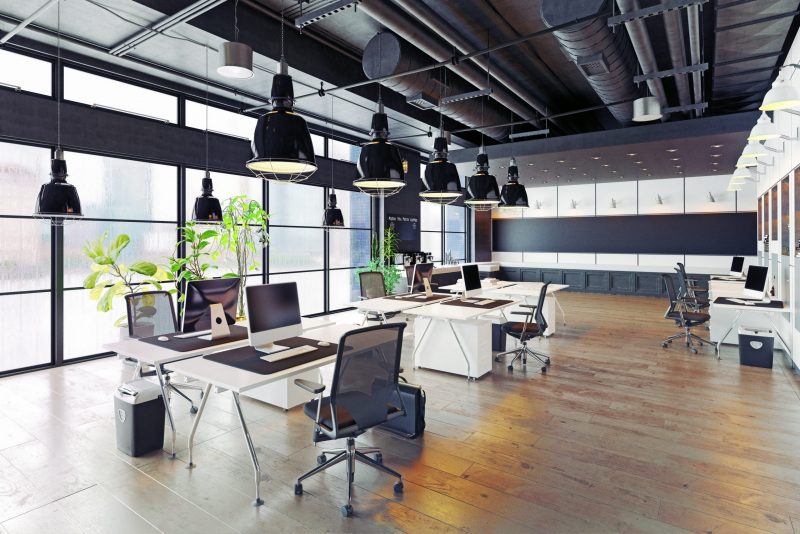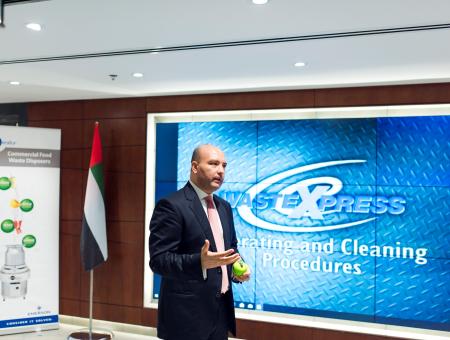Sustainable Building Strategies to Enhance Workforce Productivity and Health
Green

June 7, 2020, 6:16 am
By: Dr Samar Hamad
Although it is quite challenging to quantify the financial value of healthy buildings, numerous sustainable building strategies have been proven to enhance the indoor environmental quality and positively impact the employees’ performance and health leading to better productivity and increased profits.
Great attention has lately been paid to the impact of office environment on the productivity and well-being of employees. The connection between buildings and health will further catch the attention of employers and business owners, as many businesses are preparing to return to their office spaces after lifting the lockdown due to COVID-19 pandemic in many communities around the world. High performance buildings that incorporate sustainable design features to optimise employees’ performance and enhance the quality of their indoor environment might become the solution in the post COVID-19 world. Although it is quite challenging to quantify the financial value of healthy buildings, numerous sustainable building strategies have been proven to enhance the indoor environmental quality and positively impact the employees’ performance and health leading to better productivity and increased profits. Such strategies include but not limited to:
Improved Indoor Air Quality (IAQ)
The quality of indoor air in offices, the quantity of air supply, and contaminants concentration all have significant impact on the employees’ health and wellness. Studies conducted in this field have revealed that “green” designed workplaces with better IAQ and lower concentrations of airborne volatile organic chemicals (VOCs) can improve employees’ cognitive function scores by 61%. Better IAQ can be achieved by higher rates of outdoor air ventilation to remove contaminants and lower VOCs concentrations and carbon dioxide (CO2) levels in the workspace. The data indicates that the employees’ performance inversely correlates with their workspace indoor CO2 levels, as the employees’ attention and ability to concentrate is extremely low when the indoor CO2 concentration of their office space exceeds 2000ppm. Numerous sustainable building strategies are used to deliver better and healthier IAQ, such as using low-emitting materials for insulation, flooring, paint/coating, and furnishing to reduce off-gassing. Air filtration systems are commonly installed in areas with outstanding levels of outdoor air pollution as filters can control ambient pollutants and minimise contaminants penetration. Innovative mechanical design strategies are also employed to achieve optimum energy consumption, lowers carbon emissions, and better IAQ. Indoor landscape designs using certain plants are common tools to filter and improve the quality of indoor air. Furthermore, indoor outdoor air quality sensors have recently emerged as a popular method to deliver natural air exchange with greatly improved IAQ. However, in all cases the quality of circulated air must be monitored and frequently tested to ensure healthy IAQ and only non-toxic products must be used for cleaning and post-occupancy maintenance to maintain the good quality of indoor air.
Better Thermal Comfort
Providing acceptable indoor thermal environmental conditions is key to improve thermal comfort and create healthy work environment for employees. Indoor air temperature is one among many factors to be considered when designing for thermal comfort. Relative humidity, air speed, mean radiant temperature, metabolic activity/rate, and clothing all have great impact on the occupants’ thermal comfort. High performance shell design coupled with thermal mass can significantly improve thermal comfort. Zone cooling/heating using radiant systems (radiant heat transfer between human body and radiant surface) are also used to enhance thermal comfort. Using external shading is highly effective to control direct solar gain and ensure temperature consistency within the workspace. In addition, user thermal controls that allow employees to adjust their indoor environmental condition can boost their perception of thermal comfort.
Adequate Daylighting
Daylighting plays a major role in providing access to natural environment in the workplace. Recent studies indicate that sufficient levels of natural light in the workplace can boost employees’ mood. Numerous design strategies can be used to boost indoor daylighting levels and reduce energy consumption due to excessive use of artificial lighting. Proper building orientation coupled with external shading can ensure access to glare-free natural light. Skylights can also be installed to provide uniform and adequate daylighting levels in large spaces. However, special attention must be paid to the glazing specifications – specially, visible light transmittance (VT) and solar heat gain coefficient (SHGC) – in order to balance the quality of natural light transmitted to the space and the amount of solar heat gain through glazing. Electrochromic glass is typically used to allow daylighting while eliminate ultra-violet (UV) radiation and glare.
Attractive Views
An attractive office environment with scenic views has beneficial effect on employees’ attention as attractive views can greatly restore their focus, improve their sleep cycles, and lower work-related stress. Building form, orientation, and depth can all be used to ensure that all employees have access to outdoor scenic views. Such attractive views can be further enhanced by indoor-outdoor connectivity design approaches, beautiful indoor landscape, and biophilic patterns.
Exceptional Acoustics
The office acoustics can positively or negatively impact the auditory sense of employees. Open-plan office spaces offer an interactive workplace environment; however, they are often very noisy. Ceiling, walls, and furniture can all affect the acoustic properties of workspaces. Soft carpets and flooring materials with impact sound reduction can be used to minimise noise levels. High performing upholstered ceiling tiles, soft furnishing materials, and appropriate furniture layout can effectively deflect/absorb workplace noise and achieve exceptional acoustic properties.
Overall, high performance buildings that incorporate sustainable building features to operate with high quality IAQ, adequate natural daylight, acceptable thermal comfort conditions, attractive views, and exceptional acoustics can offer healthier, attractive, and more productive work environment. Hence, the financial benefits of high-performance sustainable building can be related to three main factors: enhanced productivity, increased retention levels (reduction in employees separation rate), and improved health. The data shows that high performance buildings can significantly enhance employee productivity levels and foster creative thoughts with 3% increase in annual profit due to improved productivity. Sustainable buildings can increase employee retention levels with 5% reduction in separation rate and 2.8% increase in annual profit. They have also reported to improve health and wellness with 30% reduction in absenteeism (number of sick days annually taken by employees) and 0.5% higher profit. Thus, the overall financial benefits of investing in high performance building may exceed 6% increase in annual profits related to enhanced productivity and health.
More information available at:
U.S. Green Building Council (USGBC). Greenbuild Digital Education webinar – Health and Wellness series: The Financial Case for Healthy, High Performance Buildings. Presented by the June 3rd, 2020.










